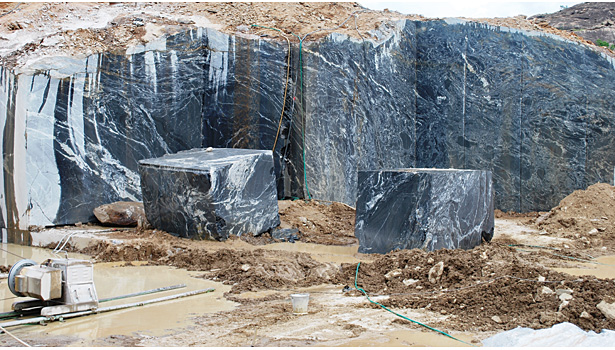Uncovering the Rich Background and Lasting Practices of Granite Quarrying
As we stand on the precipice of uncovering the elaborate tapestry of granite quarrying, a trip through time reveals not just the physical act of removing rock yet likewise the social and historical significance woven into the really fabric of this practice. From the old beginnings that laid the structure for modern-day quarrying strategies to the lasting practices that are forming the future of this market, each carve mark on granite surface areas informs a story waiting to be uncovered (granite quarries in south africa). The heritage of granite quarrying stretches far past simple removal; it is a testimony to human resourcefulness, resilience, and the enduring appeal of this marvelous stone
Old Origins of Granite Quarrying
Dating back to old people, the practice of quarrying granite has actually been an important component of human history and building advancement. The earliest proof of granite quarrying days back to ancient Egypt, where enormous pyramids and complex sculptures were crafted from this resilient stone. The Egyptians utilized primitive devices to remove granite blocks from quarries, showcasing the value of this material in their huge constructions.
Progressing in background, the Greeks also made substantial contributions to the quarrying of granite. The Greeks used granite in numerous architectural marvels, such as holy places and statues, showing their skill in shaping and sculpting this durable stone. The Romans better fine-tuned the techniques of quarrying granite, using advanced devices like blades and hammers to extract and shape granite for their renowned frameworks.
Through the centuries, the technique of quarrying granite has developed, with modern innovations enhancing performance while keeping the ageless charm of this all-natural rock - granite quarries in south africa. From ancient worlds to contemporary building contractors, the legacy of granite quarrying remains to shape our world
Evolution of Quarrying Methods
The evolution of quarrying methods has been noted by a continual progression towards greater effectiveness and accuracy in extracting granite. Early quarrying strategies involved manual labor with standard devices such as chisels, hammers, and wedges to extract granite blocks from the planet.
In even more recent times, the introduction of equipment reinvented the quarrying industry, making it possible for quicker removal rates and raised performance. Technologies such as diamond cord saws, high-pressure water jets, and pneumatically-driven drills have become conventional in modern quarries, enabling for exact cutting and decreased waste. Developments in computer-controlled equipment and 3D modeling have optimized quarrying procedures, leading to marginal ecological effect and improved sustainability methods. As the need for granite proceeds to climb, the advancement of quarrying techniques remains important to conference industry needs efficiently and sustainably.
Social Relevance of Granite
Granite holds a profound cultural relevance across various worlds as a result of its enduring existence in building work of arts and admired monuments. From the majestic pyramids of Egypt to the detailed carvings site here of the Angkor Wat holy place in Cambodia, granite has been a material of option for sharing majesty and durability in cultural heritage. In old Rome, granite columns adorned holy places and public buildings, signifying strength and permanence. The cultural relevance of granite extends beyond its physical characteristics; it embodies durability, stability, and eternity, making it an icon of enduring traditions and customs.

Lasting Practices in Quarrying
Amidst the rich background of granite quarrying and its social relevance lies an expanding focus on lasting techniques within the industry. As ecological recognition and concerns concerning resource exhaustion have increased around the world, the quarrying field has progressively accepted lasting methods to decrease its effect on the setting and surrounding communities.

In addition, improvement and rehabilitation of quarry sites post-extraction are essential to lasting methods. By bring back quarried locations to an all-natural or valuable state, such as producing wild animals environments or this page recreational spaces, quarriers can offset the environmental footprint of their procedures and add positively to the neighborhood ecological community.
Heritage of Granite Quarrying
With a historical background steeped in workmanship and commercial development, what withstanding impact has granite quarrying left on the landscape of modern-day culture? The heritage of granite quarrying transcends mere removal practices; it has shaped building marvels, urban landscapes, and cultural heritage worldwide. The sturdy nature of granite has made it a recommended choice for monoliths, structures, and facilities, standing as a testament to the skill and creativity of quarry workers throughout generations.
In addition, the financial footprint of granite quarrying can not be overlooked. The market proceeds to provide employment opportunities and drive neighborhood economies in areas where granite removal prevails. It has also stimulated technological developments in quarrying methods and devices, bring about more efficient and sustainable methods.
In regards to sustainability, the legacy of granite quarrying includes efforts to alleviate ecological influences through recovery jobs and accountable resource administration. By balancing economic interests with ecological stewardship, the industry aims to ensure that future generations can remain to gain from this enduring all-natural resource.
Verdict
